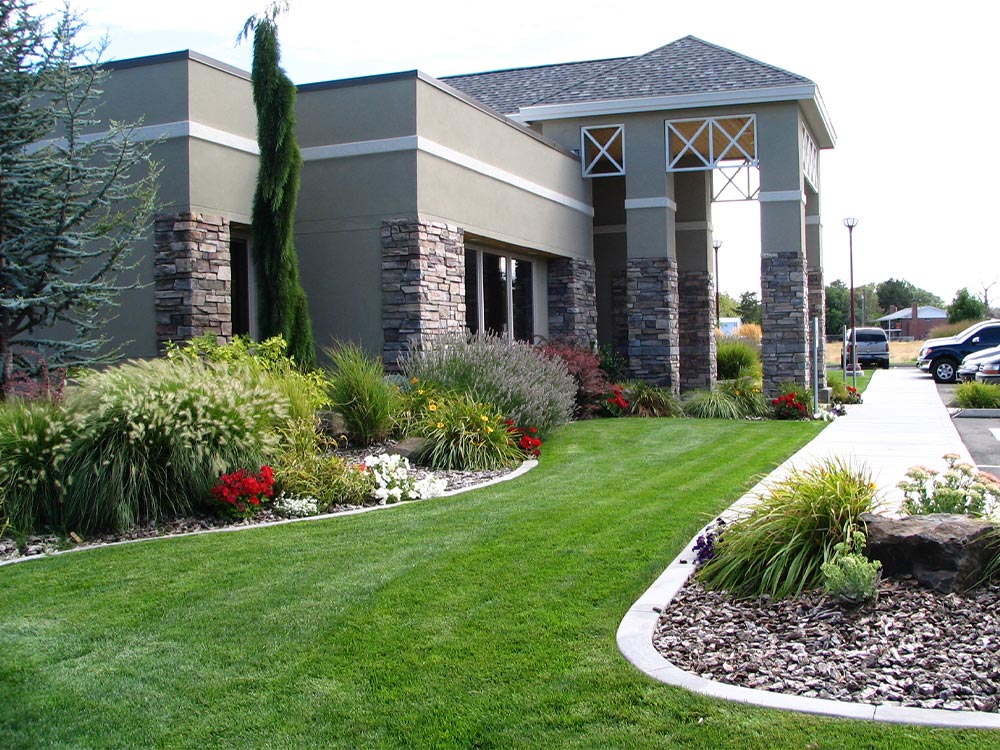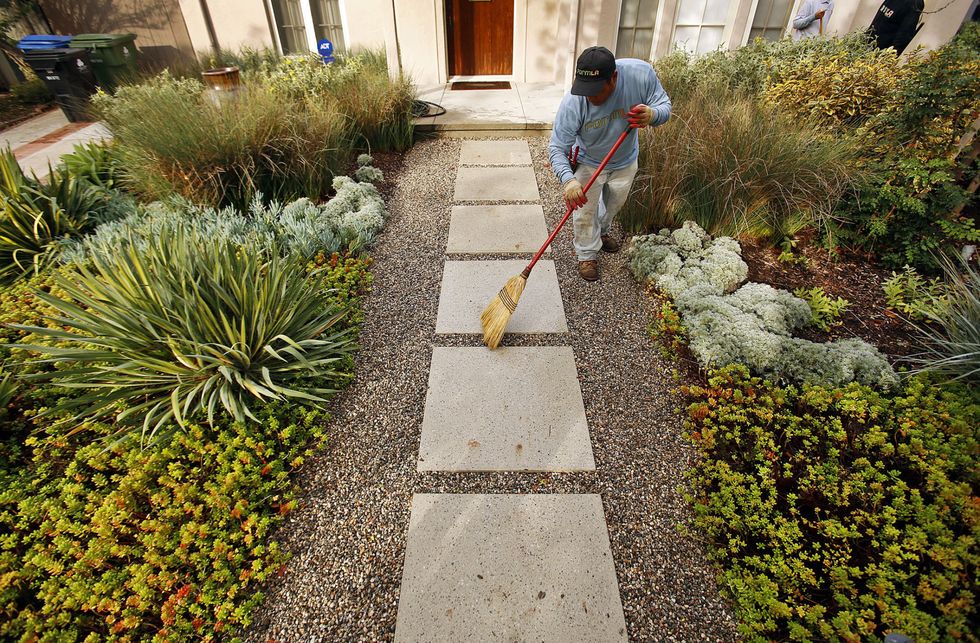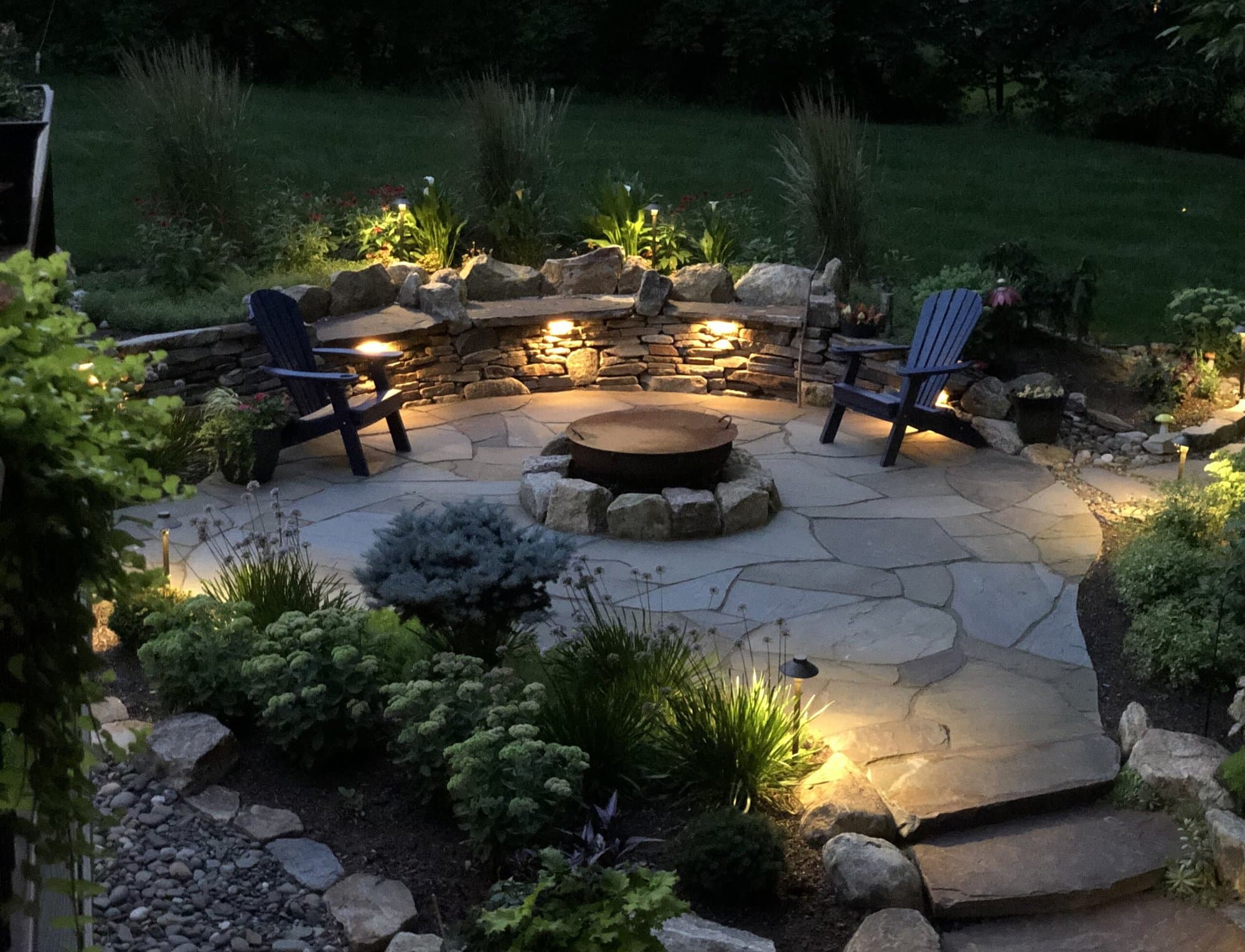Elevate Your Building's Visual With Sustainable Landscaping Designs and Eco-Friendly Practices

Advantages of Sustainable Landscape Design
Executing sustainable landscape design techniques not only preserves all-natural sources but also promotes biodiversity and enhances overall environmental wellness. One considerable advantage is the reduction of water intake through the use of drought-resistant plants, rain yards, and efficient watering systems.
Moreover, sustainable landscape design can enhance soil health and wellness by minimizing using chemical plant foods and chemicals, consequently developing a much healthier environment for plant development and beneficial soil microorganisms. This, in turn, enhances the general strength of the landscape to withstand ecological stress factors and environment change influences - landscaping contractor Jacksonville. Additionally, lasting landscaping methods can bring in varied wild animals, including pollinators like bees and butterflies, promoting a much more balanced and lively environment within the residential property
Incorporating Indigenous Plants
To build on the benefits of lasting landscaping, a calculated emphasis on including indigenous plants can even more boost environmental resilience and advertise biodiversity within the landscape. Native plants are types that naturally take place in a particular location and have evolved to thrive in the local environment, dirt conditions, and ecosystem. By including native plants in landscape design designs, homeowner can minimize water usage, lessen the requirement for chemical pesticides and fertilizers, and sustain the neighborhood wild animals population.
Integrating indigenous plants additionally aids in protecting the distinct personality and identification of an area's plants. These plants typically call for less upkeep when established, making them a cost-efficient and sustainable landscape design option in the future. Furthermore, indigenous plants can draw in indigenous pollinators like butterflies and , adding to the general wellness of the ecosystem.
When picking indigenous plants for landscape design projects, it is vital to select varieties that are well-suited to the certain environmental problems of the website. Consulting with local nurseries or herb yards can give useful advice on picking the right native plants for a certain area. By integrating indigenous plants into landscape design designs, homeowner can produce gorgeous, sustainable outdoor rooms that profit both the setting and the neighborhood.

Water Conservation Methods
Efficient irrigation approaches play a vital role in lasting landscaping practices, guaranteeing optimal water preservation efforts in exterior areas. Executing techniques such as drip irrigation, rainwater harvesting, and smart irrigation systems can significantly lower water wastage while preserving a healthy and balanced landscape. Leak irrigation provides water directly to the roots of plants, minimizing dissipation and overflow. Rainwater collecting includes collecting rain from roofs and storing it for later usage in watering, lowering the dependence on local water sources. Smart irrigation systems utilize weather data and soil wetness degrees to readjust watering timetables, avoiding overwatering and advertising water efficiency.
Along with advanced watering approaches, xeriscaping is another water-saving landscape design technique that concentrates on making use of drought-resistant plants, compost, and efficient watering to produce a low-water landscape layout - bush removal Jacksonville. By choosing indigenous plants that are fit to the regional environment and soil problems, home proprietors can decrease the visit this site right here need for excessive watering, inevitably saving water and promoting a lasting outdoor setting
Eco-Friendly Hardscaping Concepts
Enhancing outdoor areas with eco-friendly hardscaping attributes can contribute significantly to lasting landscaping methods. When thinking about hardscaping aspects, select materials like recovered wood, recycled concrete, or all-natural stone to lessen ecological impact. These materials not only include an unique visual charm to your exterior room however additionally lower the requirement for new sources removal.
Applying permeable paving options such as gravel or permeable concrete can aid decrease water drainage and advertise groundwater recharge. These options permit rainwater to seep into the ground, protecting against erosion and lessening the worry on stormwater systems.
Integrating indigenous plants right into hardscaping styles can additionally enhance eco-friendliness by supporting neighborhood wildlife and lowering the need for too much watering or chemical treatments. By incorporating vertical gardens or environment-friendly wall surfaces, you can introduce a lot more vegetation into metropolitan setups, improving air quality and biodiversity.
Integrating energy-efficient lighting, such as solar-powered LEDs, into hardscaping layouts can lower electricity consumption and lower your residential or commercial property's carbon impact. Focusing on environment-friendly hardscaping concepts not only improves the elegance of your outside space however also shows a commitment to environmental stewardship.
Maintenance Tips for Sustainable Landscapes

Frequently prune plants to advertise healthy and balanced growth and protect against overgrowth that can bring about pest invasions or diseases. Use organic fertilizers to nourish the dirt and plants without unsafe chemicals that can go to this site leach into the environment. For hardscaping aspects, such as absorptive pavers or rock paths, routinely clean them to avoid particles build-up and keep their capability. By staying proactive with maintenance tasks, you can protect the beauty and sustainability of your landscape for several years ahead.
Conclusion
Finally, lasting landscape design practices offer various advantages for home proprietors, from improving the Resources aesthetic allure of the environments to promoting ecological conservation. By integrating native plants, carrying out water preservation methods, and making use of green hardscaping concepts, residential or commercial property proprietors can create attractive landscapes that are also eco responsible. With appropriate upkeep, sustainable landscapes can grow and contribute to a much healthier community for both people and wild animals.
Furthermore, lasting landscaping can enhance soil health by reducing the use of chemical fertilizers and pesticides, thus developing a healthier environment for plant development and advantageous dirt organisms.To build upon the benefits of sustainable landscaping, a strategic focus on including native plants can even more boost ecological resilience and promote biodiversity within the landscape. By consisting of indigenous plants in landscape design layouts, residential or commercial property owners can lower water use, decrease the need for chemical pesticides and fertilizers, and support the regional wild animals population.
These plants usually require less upkeep as soon as developed, making them a cost-effective and sustainable landscape design solution in the lengthy run. By integrating native plants right into landscape design layouts, building owners can produce lovely, sustainable exterior spaces that benefit both the environment and the area.